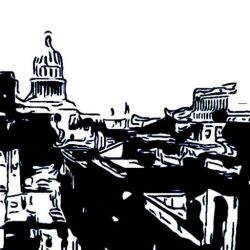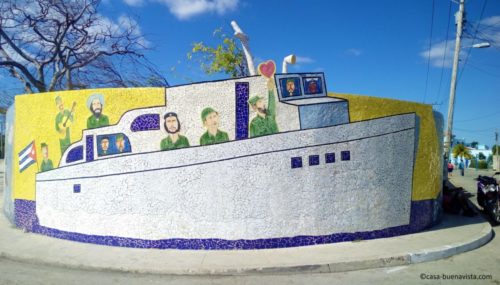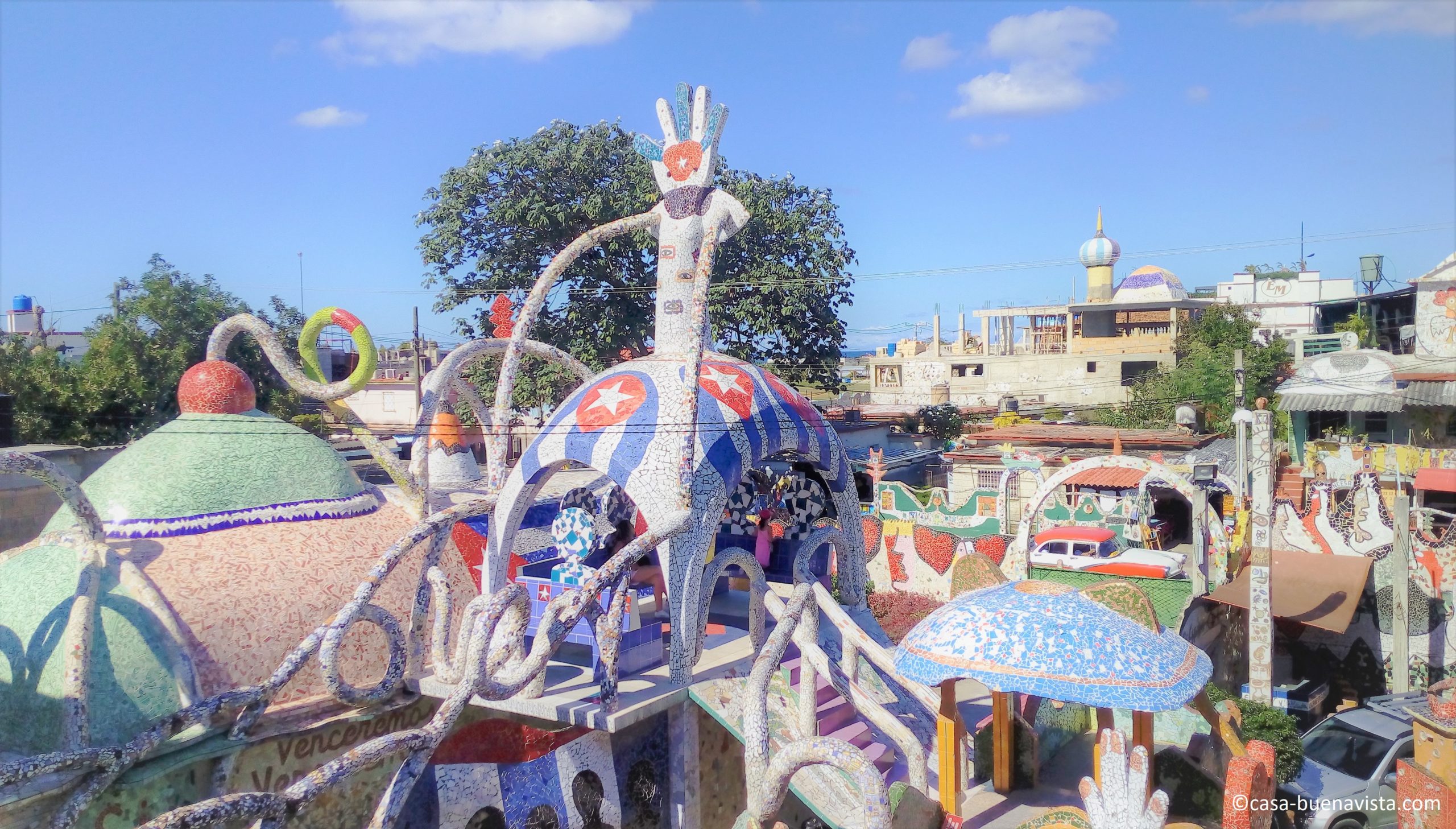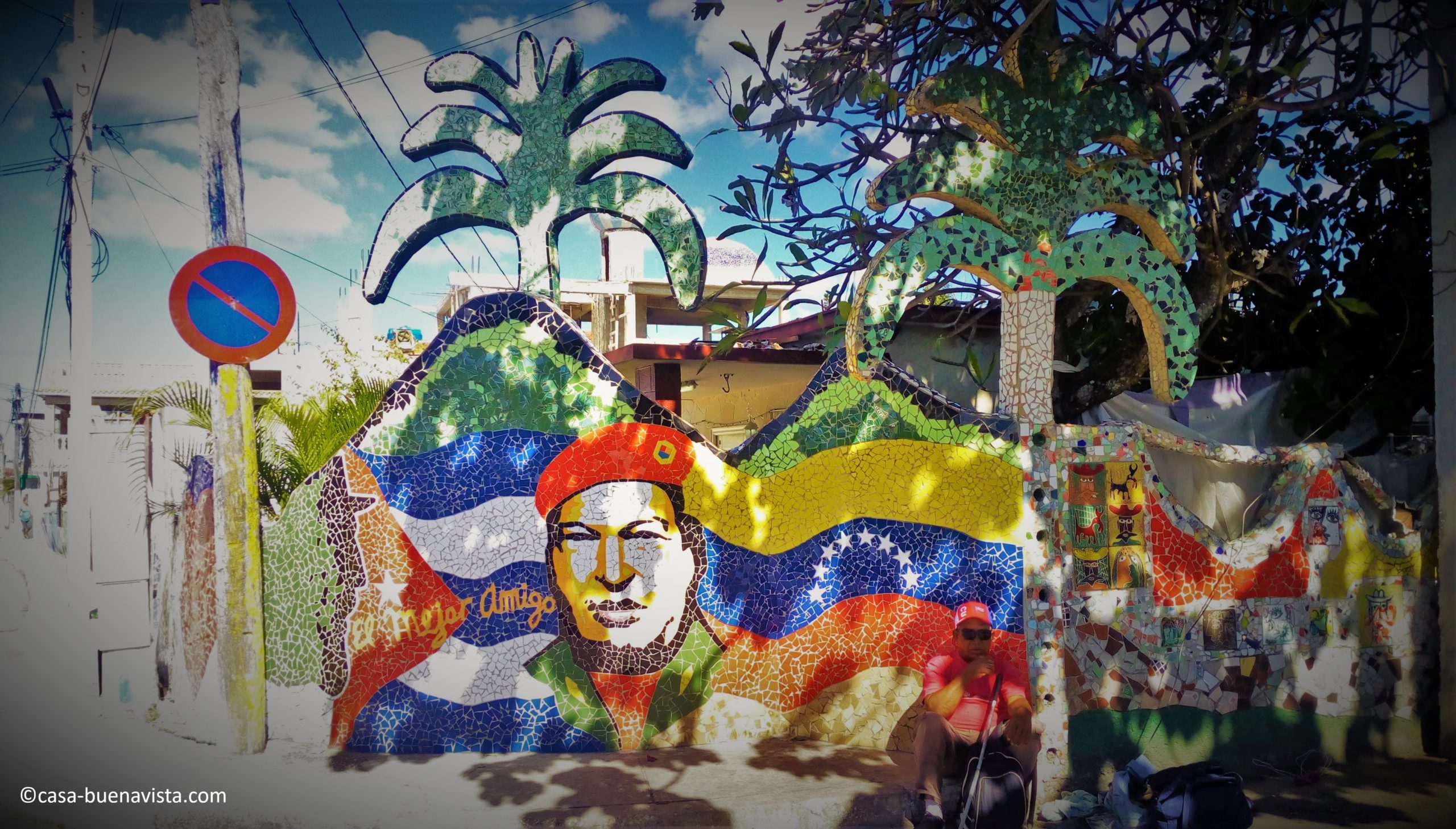
The Jaimanitas district
When you enter the Jaimanitas district, you are immediately seized by the psychedelic mosaics that adorn the alleys and houses. So much that you have to ask where José Fuster’s house is. After wandering around this open-air museum for a while with a smile on your face and a camera in your hand, you get to the point. How can we not think of Gaudi in Barcelona, Brancusi in Romania or the Facteur Cheval in France?
Who is José Rodriguez Fuster?
José Fuster was born in 1946 in Caibarién, a small coastal town in The Province of Villa Clara, an entry point for the Cayo Santa Maria. He came from a fishing family and at 14 he moved to the Sierra Maestra to participate in the literacy campaign launched by the revolutionary government. Then he moved to Havana to study art and from 1966 he began to make a live from it.
Fuster, as people call it, has become global known and his works are exhibited all over the world. He invests the money gradually harvested in the transformation of his house, houses in the neighborhood and adjacent alleys. In his view, this is a real community project. Today, Fusterlandia is a popular place to visit, but the impact of these on the life of the neighbourhood is to this day relatively contained.
A colorful and original work
Fuster’s works are made of colorful mosaics and represent Cuban symbols, whether historical, geographical, political, religious or cultural. In an alley, we come across the Granma, famous ship used by Fidel and his acolytes for the landing of November 25, 1956. The original Granma can be seen at the Museum of the Revolution in Havana. Elsewhere, there are sirens adorning the walls, a Cuban flag or Hugo Chavez “El mejor amigo”. In Fuster’s house, we find the Virgen del Cobre, scenes of the sea or even the Hand of God.
A visit worth
It is really a special place with a very special energy. It’s worth going if you enjoy naïve art and are ready to get out of downtown Havana. You can walk around the neighborhood, stroll through the alleys and take pictures freely. The entry of Fusters’ house is free of charge. You can also drink a juice or eat something in the small bars and restaurants near Fuster’s residence. The sea is close, but here its access is not easy, so this should not be the purpose of the trip. The visit is very well suited to families with children as well.






